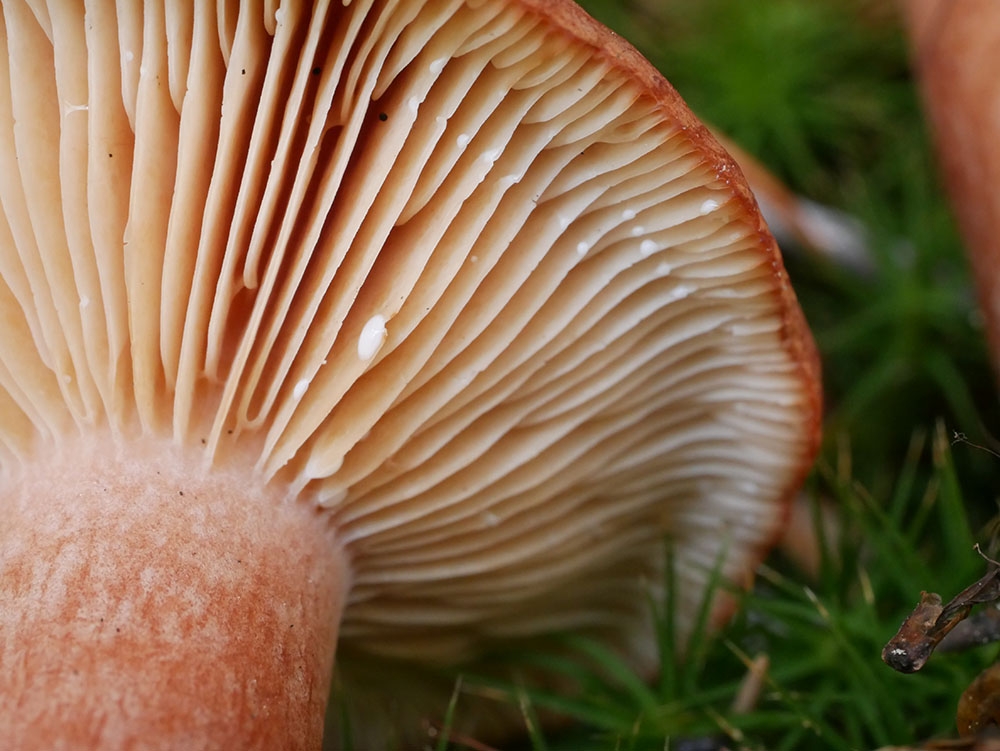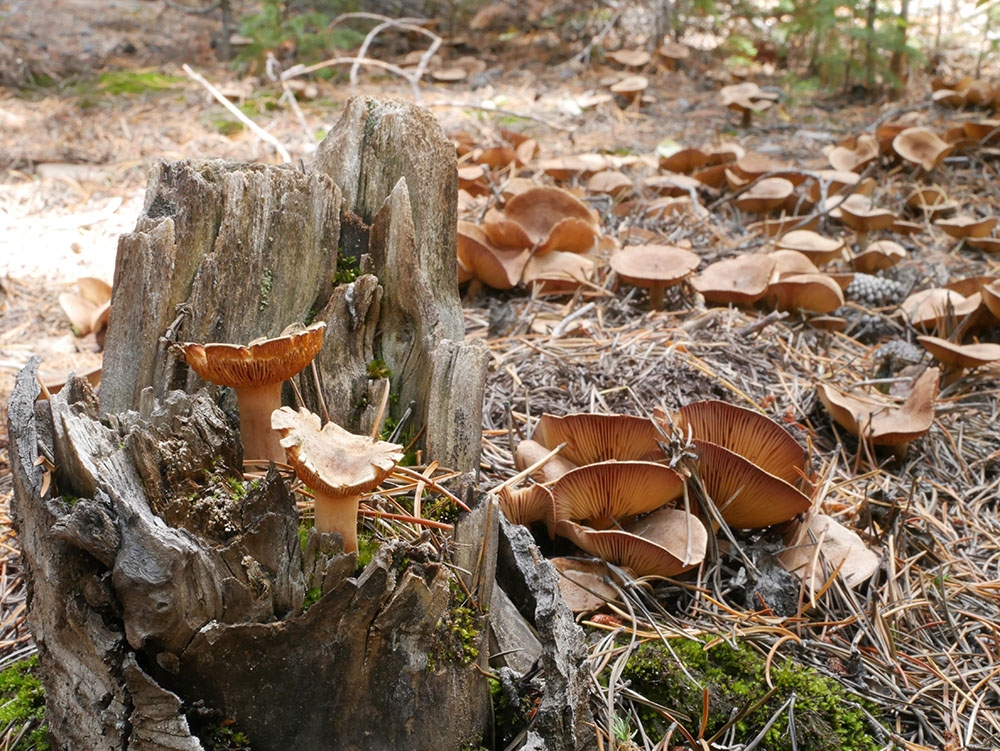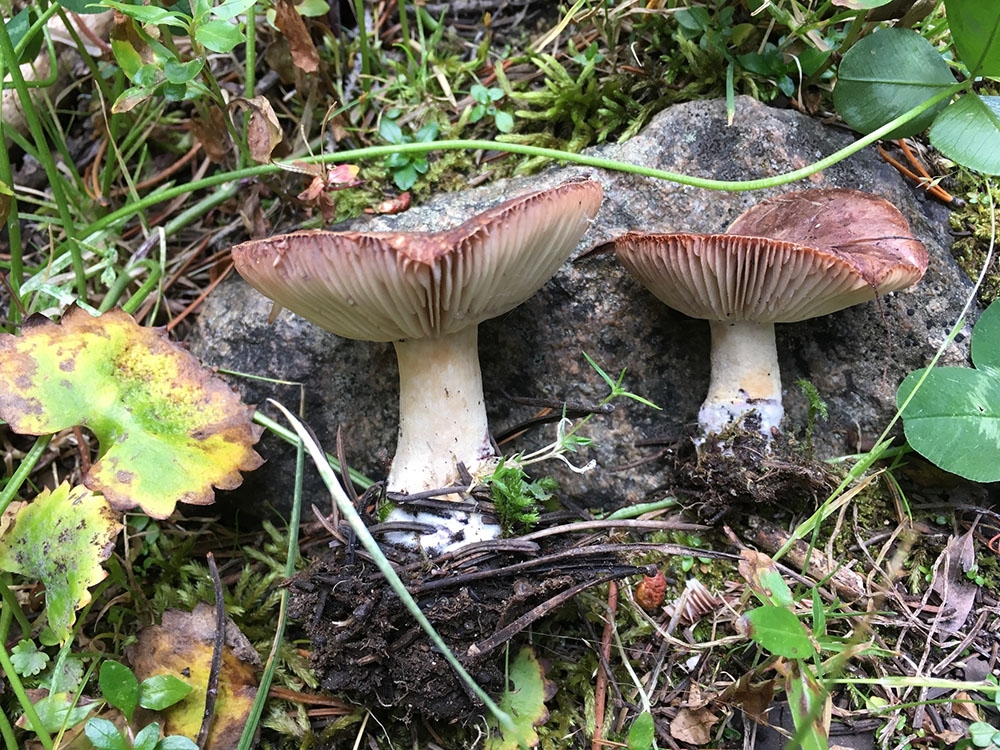Lactarius in the Colorado Rockies
Mushroom hobbyists and foragers may be familiar with milk-cap mushrooms, a type of fungus named for their fruiting bodies that produce a “milky” or latex-like substance, especially when cut or otherwise damaged. Many species are edible and are popular among collectors across the globe. These mushrooms are most often identified by their ability to produce a milky latex, which can be white, creamy orange, a deep red or even a bright blue. Their gills can also “bruise” and turn a blue or green color when chemical compounds are exposed to air. This trait however is not exclusive to milk-cap mushrooms and should not be used as an end-all identification method. Edible, poisonous and psychedelic mushrooms can be deceptively similar in physical attributes.
“Milk-cap” mushrooms can refer to species from any of three main genera, including Lactarius, one of our major groups of study. Like most fungal genera, Lactarius contains both edible and non-edible species. We are looking into much smaller details, however: genetic diversity. In the Southern Rocky Mountains, there are roughly 30 to 60 species of mushrooms in the genus Lactarius. Several studies have looked at the Lactarius species of Colorado, but are lacking in providing a complete overview of all species and the complete genetic diversity of Lactarius in the Southern Rocky Mountains. The research question here is: What is the true systematic diversity of the genus Lactarius in Colorado and the Southern Rocky Mountains? (Systematics refers to the classification, relationships and naming of organisms, or taxonomy.)
As obligate symbionts, Lactarius species rely on assorted host plant species in order to survive, and vice versa. Native to forests and shrublands across the globe, they most closely work with and depend on trees. This type of symbiotic relationship is called an ectomycorrhizal symbiosis. The fungi will focus mainly around the roots of these host plants, where they provide water and minerals to the plant, and receive carbohydrates in return. The fungi do not penetrate plant cells, but instead form a netting of cells that grows around and with the plant roots. Some species may show a higher specificity and focus only on a few host species, while some are generalists and can work with many hosts in their community. In either case, the ecological importance of Lactarius is significant, as the health of the plant community relies on these types of fungi. Unique relationships between fungi and plant hosts are important to study not only for understanding how ecosystems operate, it is important for conservation and restoration. Understanding the form and function of ectomycorrhizal fungi in the environment will inform strategies for their use and policies in agriculture, conservation and ecological restoration.
This blog post was written by Gary Olds, Ph.D. student at University of Colorado Denver. Gary is interested in environmental science and biodiversity. His research focuses on fungal diversity in the Colorado Rockies.
Gallery



Add new comment